I’ve never seen the northwest coast of England so I decided to take the train from Dumfries to Whitehaven (£14/$18) with it’s American connection and a protected harbor it sits about half-way between the 2 biggest towns on the route, Carlisle and Barrow-on-Furness. The Whitehaven area is thought to have been settled by Norse in the 10th Century. Formally a coal mining, fishing and importing port, largely in tobacco from America in the late 1600’s when it was handling 10% of England tobacco business reshipping to Holland France and other European countries. By 1820 it had lost it’s tobacco trade to Glasgow and it is now mainly for leisure craft. The very nice Lismore Guest House was one street over from the rail station overlooking the harbor as can be seen from my window.
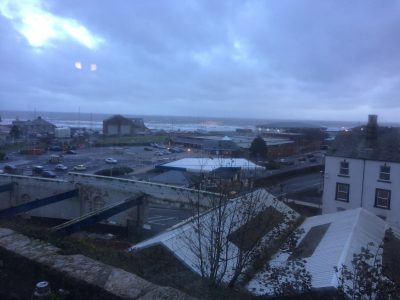
An easy town to walk as the harbor, the Beacon Museum, Wellington Pit coal mine and shopping district are all close. I was very pleased to pick up a new pair of Regatta trousers with lots of zippered pockets in a charity shop for £7.5/$10 and since my travel rule of one-in, one-out, I dropped of an older pair of trousers the next day.
Standing in the middle of the harbor is a tower raised to celebrate the millennium that is representative of the mast of a tall ship to commemorate the town’s shipping history.
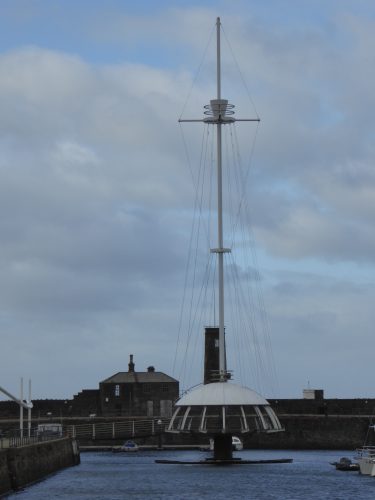
And as you can see the harbor, seen here from the top of the Beacon Museum, is fairly crowed for late October probably due to the unusually warm autumn weather. The series of jetties and piers constructed over the years has left it a safe place to dock.
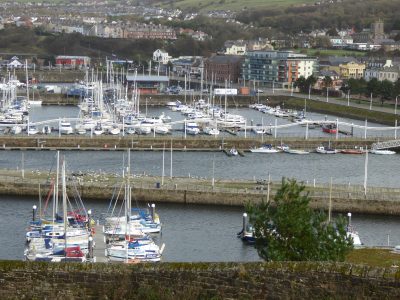
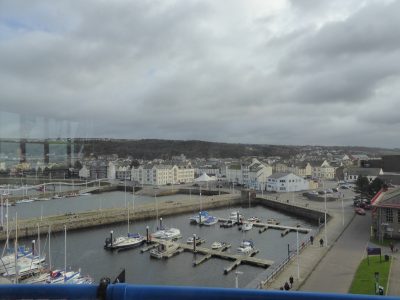
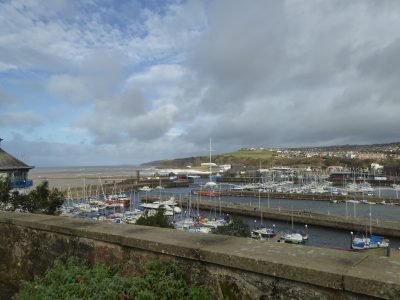
From his expression it appears the seated lad has no idea how to finish his knot. A bowline?
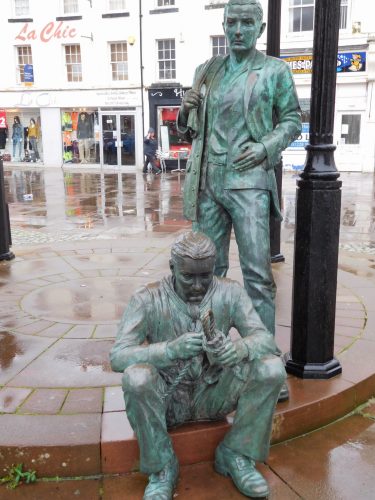
And for a simple back alley fire escape, this one is pretty fancy.
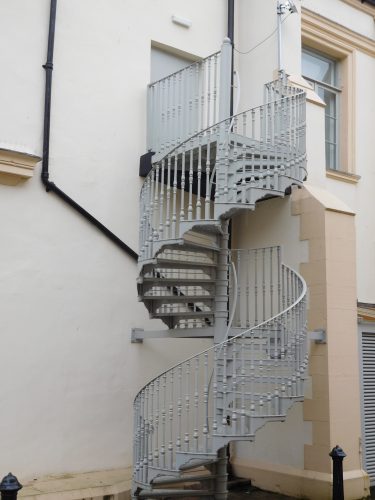
Looking for a particular ship?
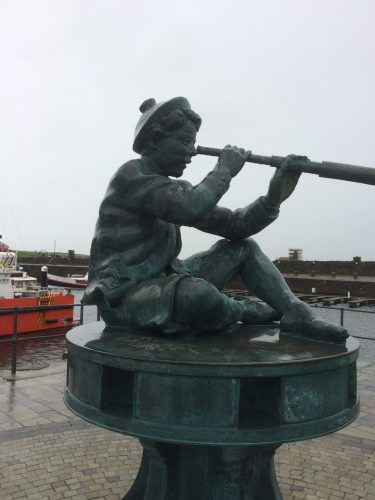
King Street had been turned into a pedestrian walkway a few years ago with shops occupying the ground floor level and residences and offices above. Maggie Howarth created these mosaics. The first alludes to the American connection as a young John Paul Jones, later called the father of the American Navy apprenticed out of Whitehaven on the King George. That apprenticeship would be important in the future.
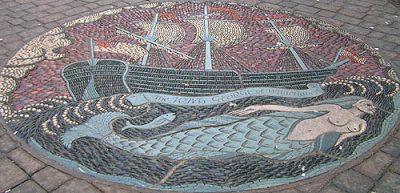
A fox and hounds.
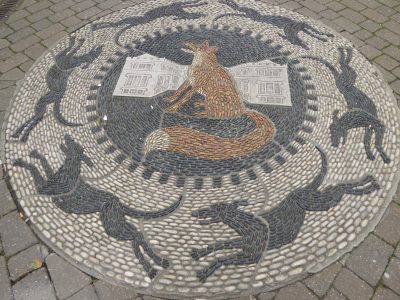
Crampton locomotive which was made at the Lowca engineering works just up the coast. This factory owned by Tulk and Ley developed the first Crampton locomotives between 1845-1847 which had a distinctive single pair of large driving wheels and was designed with a low centre of gravity to improve stability on a narrow gauge at speed. The design was adopted more in the United States and in Europe than in Britain.
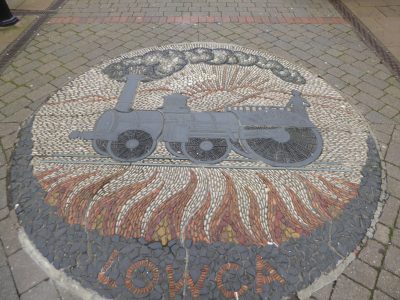
I assume this one depicts the lift that would lower miners into and out of the Wellington Pit coal mine
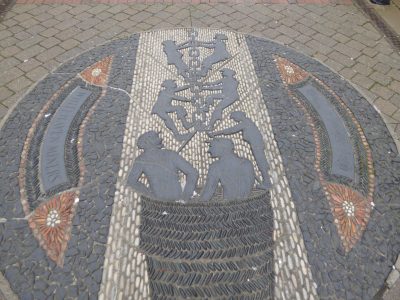
John Paul Jones returned to Whitehaven in April 1778 with the intent of burning the hundreds of ships packed close in low tide in the harbor. Due to contrary winds it took longer than anticipated for the two launches to reach the shore. Jones and his crew in one boat upon landing managed to climb on each other’s shoulders and, since the guards had taken shelter inside to get out of the cold spring winds, was able to take the garrison without any bloodshed or guns fired. Apparently Jones’ crew was of a mutinous nature and had planned to strand their captain if the attack failed. Seeing Jones wave the all clear from the top of the battle works gave them courage and the rest of his men joined in. They were able to successfully spike all the guns thereby assuring their eventual escape.
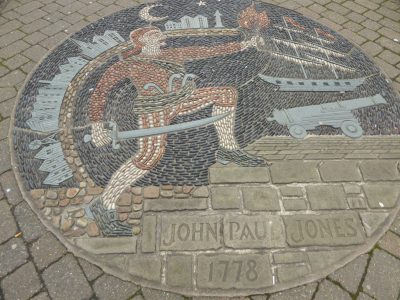
These are some of those very cannon.
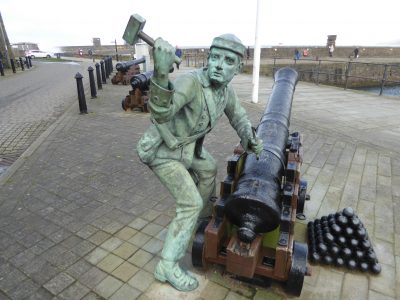
The crew of the second boat was assigned to burn the ships but, like any good Yankees arriving in Britain, they immediately secured a pub and proceeded to get drunk. So rather than burn the ships they reportedly loaded up their launch with a couple of barrels of beer and headed back to the Ranger.
In 1999 the town of Whitehaven issued this proclamation absolving America and Jones of his crimes due to the subsequent 200 years of peaceful relations between the two countries. What caught my eye was the Mayor of the town was one Geoffrey Blackwell who spells his name the same was my brother does.
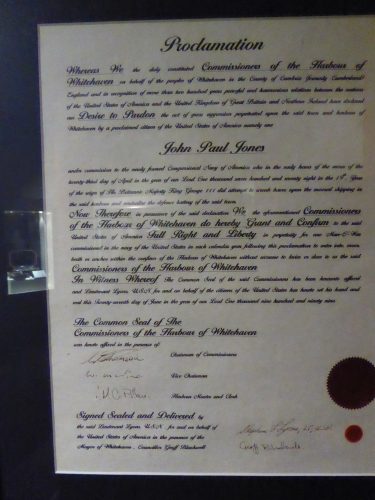
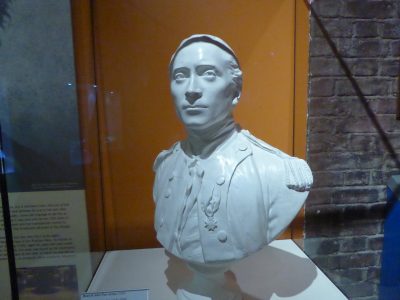
This plinth is dedicated to the 136 men who lost their lives in Cumbria’s worst mining disaster that occurred on May 11, 1910. Fire caused the explosion of methane gas. The fire was fought for hours until the owners decided that no one could have survived and, to protect their investment of coal, order the mine sealed to put out the fires. To their horror, upon reopening the mine some months later, the miners found chalked writing on the walls indicating that some trapped minors had survived the initial explosion and had lived for some time. In all, 85 women were widowed and 260 children lost their fathers. Later studies showed that these minors would not have survived the poisonous gases and more than likely would have all died before the mine was sealed.
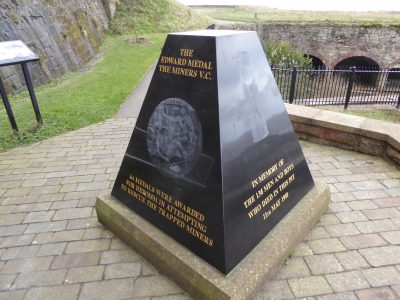
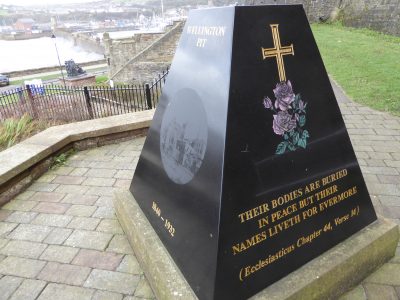
Wellington Pit entrance
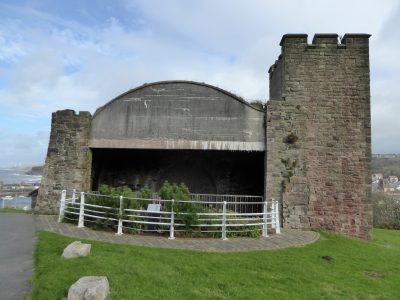
From a distance this looked like a typical memorial on a high hill overlooking the harbor but The Candlestick was actually a vent to help draw out dangerous methane gasses.
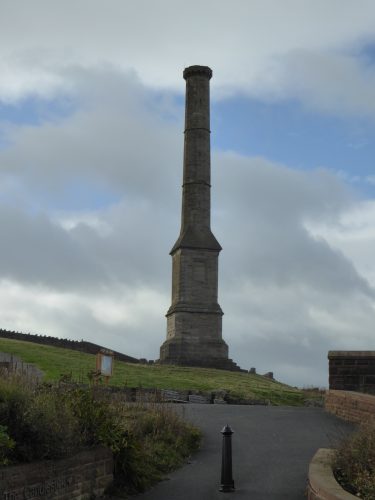
Overlooking the harbor and the Beacon Museum
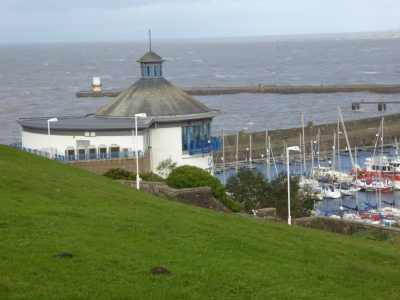
Although there is evidence of Roman occupation a few miles away, there is no proof of any settlement in Whitehaven. In the Beacon Museum there was a temporary display of Roman gladiatorial effects.
https://www.gladiators-exhibition.com
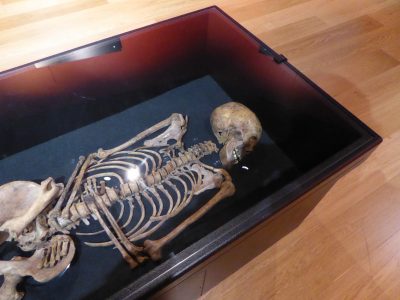
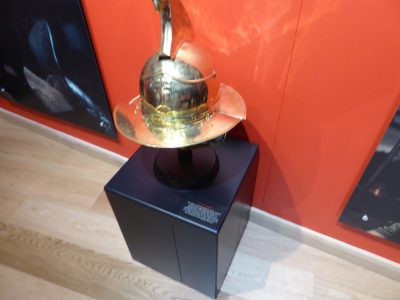
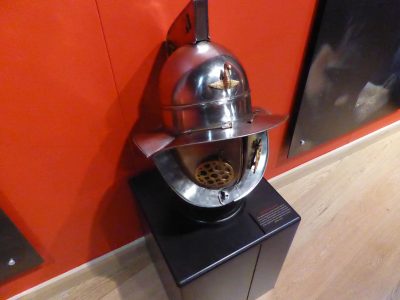
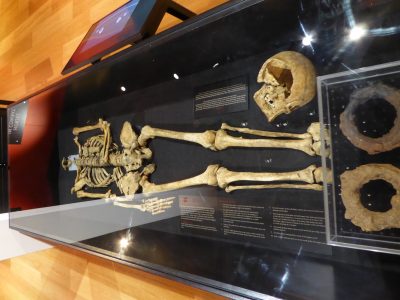
And there is a permanent exhibit, The Sellafield Story, exhibiting nuclear power and the Sellafield nuclear fuel reprocessing and decommissioning site. https://en.wikipedia.org/wiki/Sellafield
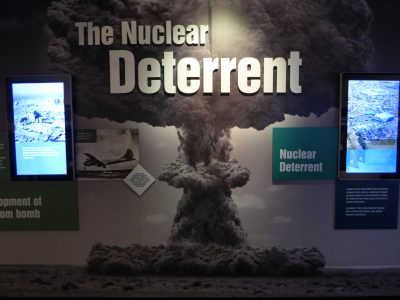
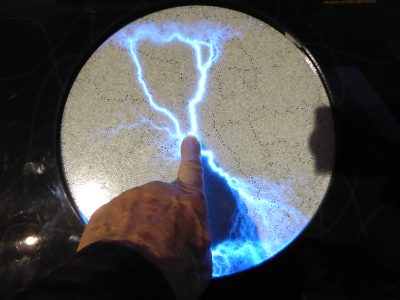
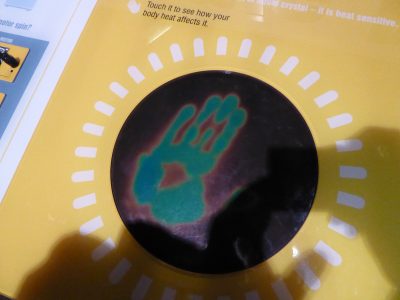
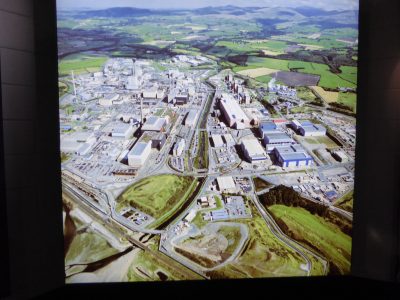
As I was leaving the museum there was a display of local activities one of which is the turning competition where participants put on a horse collar, why I don’t know, and make grotesque faces. We have a winner!
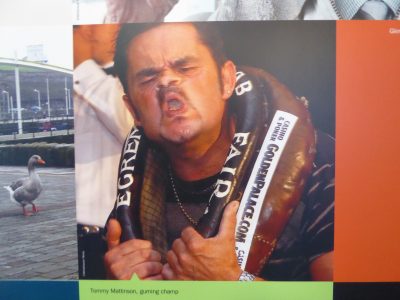
And I must note that it can get windy here. But the harbor is safe
{ 0 comments… add one now }